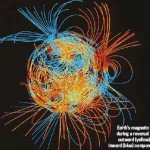Thirty Meter Telescope (TMT)
As its name implies, the Thirty Meter Telescope will be outfitted with a 30m mirror. That’s far too big to cast in one piece, so the TMT’s primary consists of 492 hexagonal segments. As such, the TMT can be regarded as a scaled-up version of the twin 10m Keck telescopes, which have 36 mirror segments each. “Development of the primary mirror is our largest technological challenge,” says TMT scientist Warren Skidmore. “The entire observatory has been designed with mirror performance in mind.”
The California Institute of Technology (Caltech) and the University of California – the same two organisations that built the Keck telescopes – founded the TMT Observatory Corporation in June 2003, together with the Association of Canadian Universities for Research in Astronomy (ACURA). Meanwhile, many US universities and institutes in China, Japan and India have joined the TMT International Observatory group. The TMT is being built at Mauna Kea, the giant volcano on Hawaii’s Big Island that is already home to many large scopes, including Keck I, Keck II, Gemini North and Japan’s Subaru.
While the Giant Magellan Telescope and the European Extremely Large Telescope will both be located in Chile, the TMT is the only ‘monster scope’ north of the equator. ‘There is ample science for a number of 30m class telescopes,’ says TMT spokesman Gordon Squires. And since TMT is in the north, “Complementary science will be enabled, and the location of these observatories will allow us to explore the entire night sky.” Like its two competitors, the TMT will mainly operate at optical and near infrared wavelengths, and capture highly detailed images and high-resolution spectra by using the novel technique of multi-conjugate adaptive optics, which will provide correction for atmospheric turbulence over the telescope’s full field of view.
Astronomers expect the TMT to shed light on the early history of the Universe by exploring the very first stars and galaxies that appeared on the cosmic stage, working in close cooperation with the James Webb Space Telescope. The telescope will also study the formation of galaxies, and the role played in this process by supermassive black holes.
FACTS
- Mirror size: 30m (made up of 492 hexagonal segments)
- Location: Mauna Kea Observatories, Hawaii (altitude 4,050m)
- Date of completion: 2021
- Cost: $1.2 billion (£740 million)
- Trivia: The innovative, 66m spherical ‘calotte’ enclosure has a circular ‘shutter’, while natural ventilation is provided by 98 vent doors.



























